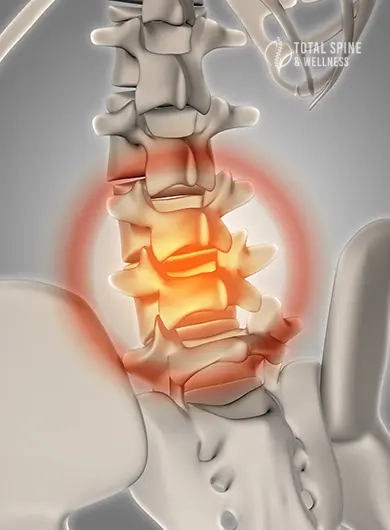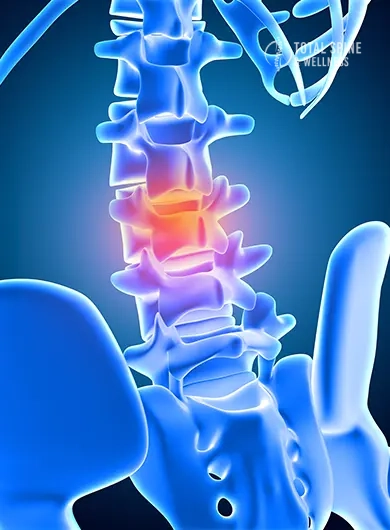How to Regenerate Spinal Discs Naturally: A Comprehensive Guide to Spinal Health
Our Team
We are a team of highly specialized spine surgeons dedicated to pioneering the future of spine care.
Share:
Table Of Contents
- Best Natural Methods to Regenerate Spinal Discs
- What Are Spinal Discs and Why They Degenerate?
- Can Spinal Discs Regenerate Naturally?
- How to Regenerate Spinal Discs Naturally
- Foods to Regenerate Spinal Discs
- Supplements That Support Disc Health
- Lifestyle & Preventive Strategies
- Emerging Research & Non-Surgical Innovations
- When Natural Methods Aren’t Enough
- Conclusion: Your 30-Day Natural Regeneration Plan
- Faqs
Best Natural Methods to Regenerate Spinal Discs
Back pain is one of the most common health complaints worldwide, and in many cases, the root cause lies in the spine. One of the main issues is spinal disc degeneration, a condition where the soft, cushioning discs between the vertebrae wear down over time, leading to chronic pain, stiffness, and reduced mobility. As more people seek alternatives to surgery or long-term medication, there is growing interest in how to naturally regenerate spinal discs. From nutrition and exercise to emerging therapies, a holistic approach is gaining popularity among those hoping to support spinal health and live pain-free.
Spinal discs are crucial for maintaining flexibility and shock absorption in the spine. They act as cushions between the vertebrae, allowing movement and reducing pressure during activities like walking, sitting, and lifting. Without healthy discs, the spine becomes stiff and prone to pain and injury. Maintaining proper disc function is essential for a healthy back and preventing long-term issues like chronic back pain.
Watch how our patients have improved their spinal health naturally with expert-backed supplement strategies.
What Are Spinal Discs and Why They Degenerate?
Spinal discs are the soft, rubbery cushions that sit between the vertebrae in your spine. Each disc acts like a shock absorber, helping the spine stay flexible while also protecting the bones from impact during movement. Structurally, a disc has two main parts: a tough outer layer called the annulus fibrosus and a gel-like center known as the nucleus pulposus. Together, they allow the spine to bend, twist, and bear weight without pain.
Over time, however, these discs can begin to wear down — a process known as disc degeneration. While this is often considered a normal part of aging, certain lifestyle and health factors can speed up the process. Dehydration, poor posture, chronic inflammation, lack of movement, and even smoking can all negatively impact disc health.
Degenerated discs can lose their height, become less flexible, and even develop small tears. This often leads to discomfort, stiffness, and — in more severe cases — nerve compression.
According to the National Institutes of Health (NIH), disc degeneration is one of the leading contributors to back pain among adults.
Understanding why discs deteriorate is the first step toward learning how to regenerate spinal discs naturally — and restoring long-term spine health.
What Causes Spinal Disc Dehydration?
Several factors contribute to spinal disc dehydration:
Aging: Over time, the discs naturally lose water content, which can result in reduced flexibility and height.
Dehydration: Insufficient water intake directly affects the hydration of the discs, making them less effective at shock absorption.
Poor Posture: Maintaining improper posture can place excessive pressure on the discs, reducing fluid flow and causing them to dehydrate.
Lack of Movement: Sedentary lifestyles hinder the circulation of fluids in the discs, contributing to dehydration.
Chronic Inflammation: Inflammatory conditions like arthritis can damage the disc’s ability to retain fluid, leading to faster degeneration.
Smoking: Smoking restricts blood flow, decreasing the nutrients and oxygen delivered to the discs, contributing to dehydration.
How to Hydrate Spinal Discs Naturally ?
To rehydrate spinal discs, it’s important to stay well-hydrated, engage in regular movement, and reduce spinal pressure. Drinking 8-10 cups of water daily, taking frequent breaks to move, and doing spinal stretches like Cat-Camel and Child’s Pose can support the hydration of your discs. These actions help promote fluid absorption and prevent further dehydration.
Dietary Contributions to Disc Rehydration
Certain foods can support the hydration and health of your spinal discs. Focus on a diet rich in anti-inflammatory foods such as salmon, flaxseeds, and leafy greens. Bone broth, collagen peptides, and vitamin-rich foods (especially Vitamin C) provide the necessary building blocks for disc repair and regeneration.
When to Seek Medical Advice
If your pain or stiffness persists after following a hydration and exercise routine, or if you experience symptoms like numbness or weakness, it may be time to consult with a healthcare professional. Persistent pain or increasing symptoms can indicate more severe disc degeneration or other spinal issues that may require medical intervention or advanced treatment options.
If your symptoms persist, it may be time to consult with a specialist. [Contact Us] today to schedule your consultation and get the care you need.
How to Rehydrate Discs in Spine Naturally?
Can spinal discs regenerate naturally? While full regeneration is rare, there’s growing evidence that disc health can improve naturally with the right approach.
Spinal discs have limited blood flow, which slows healing. But healthy lifestyle habits — like targeted movement, hydration, and anti-inflammatory nutrition — may help restore some disc function and reduce symptoms. Early intervention is key.
Although severe degeneration usually requires medical care, many people see real improvement through consistent, natural strategies.
Explore our full Guide Disc Regeneration for research-backed tips and tools to support your spine.
What “Regeneration” Really Means: Rehydration vs. Regrowth
Full regrowth of a severely degenerated disc is uncommon. What most people feel as “regeneration” is rehydration and symptom improvement—better shock absorption, less morning stiffness, fewer flare-ups.
Set the right expectation
What improves: hydration, flexibility, pain levels, activity tolerance.
What may not fully reverse: advanced structural changes on imaging.
Timeline: many notice small gains in 4–8 weeks with consistent habits; bigger changes take months.
Track meaningful progress
Morning stiffness minutes (aim ↓ week-to-week)
Walking tolerance without pain
Need for pain meds over time
Simple function goals (carry groceries, sit through a meeting, sleep through the night)
When to escalate care
Persistent numbness/weakness, progressive symptoms, or pain that interrupts sleep → get a spine-informed evaluation. Natural care and clinical care can (and often should) work together.
Foods to Regenerate Spinal Discs
The right nutrition plays a powerful role in healing. Choosing foods to regenerate spinal discs can reduce inflammation, support tissue repair, and improve spinal hydration.
Omega‑3 Rich Foods
Fatty fish like salmon, walnuts, and flaxseeds help lower inflammation, which is essential for disc recovery.
Collagen-Boosting Foods
Bone broth, eggs, and citrus fruits provide nutrients like glycine and vitamin C — both critical for collagen production in spinal discs.
Antioxidant Superfoods and Spices
Blueberries, spinach, turmeric, and ginger protect disc cells from oxidative damage and support long-term spine health.
7-Day Sample Meal Plan
A weekly plan rich in foods to regenerate spinal discs might include:
- Oatmeal with berries and flaxseeds
- Grilled salmon with leafy greens
- Bone broth soup
- Ginger turmeric tea
- Greek yogurt with almonds and honey
Want to explore advanced treatments alongside nutrition? See our guide on PRP Therapy for disc healing support.
Building your meals around foods to regenerate spinal discs is a smart step toward natural, long-term recovery.
Stretching & Stabilization to Enhance Disc Hydration
Movement is the disc’s pump. Combine gentle decompression with light stabilization so fluid gets in—and stays useful.
H3: Daily “Decompression” Sequence (5–7 minutes)
Child’s Pose (30–45s × 2): easy flexion for many backs; stop if it provokes leg pain.
Prone on Elbows (30–45s × 2): mild extension that can reduce posterior disc pressure; breathe relaxed.
Supine Knees-to-Chest (20–30s × 2): gentle unloading after sitting or driving.
Tip: pick the 2–3 moves that feel best and rotate them through the day (morning, mid-day, evening).
H3: Core & Posture Basics (4–6 minutes)
Abdominal Bracing + Marches (2×10/side): keep ribs down, low-back neutral.
Hip Hinge Practice (2×10): protects discs during lifting; move from hips, not spine.
Desk Micro-Break: every 30–45 minutes—stand, 10 hip hinges, 10 shoulder rolls, 5 deep breaths.
H3: Sleep Positions that Reduce Disc Load
Side-lying with pillow between knees or back-lying with pillow under knees to keep the lumbar curve neutral.
Avoid stomach sleeping—it increases extension and facet load for many people.
Supplements That Support Disc Health

While no supplement can reverse disc degeneration entirely, some nutrients may support repair and reduce inflammation when paired with a healthy lifestyle.
Vitamin D
Essential for calcium absorption and bone strength.
Suggested dose: 600–800 IU daily (NIH)
Magnesium
Aids in muscle relaxation and cellular repair, helping reduce disc-related tension.
Suggested dose: 300–400 mg daily (Mayo Clinic)
Collagen Peptides
Supply amino acids that support disc structure and elasticity.
Suggested dose: 10–15 grams daily
Glucosamine
May ease joint discomfort and contribute to cartilage and disc integrity.
Suggested dose: 1,200–1,500 mg daily
Adding targeted supplements can enhance your results as you explore how to regenerate spinal discs naturally — but consistency is key.
Lifestyle & Preventive Strategies
Long-term spine health depends on small daily choices. Preventing further disc degeneration — and supporting natural healing — starts with how you move, rest, and work.
Ergonomic Workspaces
Use chairs with lumbar support, keep screens at eye level, and take standing or stretching breaks to reduce strain on the spine.
Sleep Posture
Sleeping on your back or side with a supportive mattress helps keep the spine aligned. Avoid sleeping on your stomach, which can increase pressure on discs.
Reducing Spinal Load
Maintain a healthy weight, lift with your legs (not your back), and avoid carrying heavy bags on one shoulder. Even simple adjustments can protect your spine.
These lifestyle shifts support both healing and prevention — essential steps when learning how to regenerate spinal discs naturally and maintain long-term comfort.
Emerging Research & Non-Surgical Innovations
As interest in natural healing grows, researchers are exploring new, non-surgical ways to support spinal disc regeneration.
Hydrogels
Hydrogel injections are being studied as a way to restore disc height and hydration by mimicking the soft, gel-like center of healthy spinal discs. Some early trials, including work at the Cleveland Clinic, show promising results in reducing pain and improving function.
Stem Cell Secretome
Rather than using whole stem cells, scientists are isolating the “secretome” — the healing signals they release — to stimulate tissue repair. Research at the Mayo Clinic suggests this approach may help reduce inflammation and promote disc regeneration without invasive procedures.
For a deeper look at cutting-edge treatments, check out our guides on Exosome Therapy
and our full Stem Cell Therapy.
While these innovations are still being tested, they reflect the growing momentum behind how to regenerate spinal discs naturally — blending science, safety, and non-invasive care.
When Natural Methods Aren’t Enough
While many people benefit from natural strategies, some cases of spinal disc degeneration require more advanced care. If pain is severe, constant, or affecting mobility, it may be time to explore clinical interventions.
Conditions like herniated discs, spinal stenosis, or nerve compression often go beyond what diet, exercise, and supplements can manage alone.
In these cases, regenerative treatments — such as platelet-rich plasma (PRP), stem cells, or minimally invasive procedures — may offer a middle ground before surgery. Explore your options in our guide on Regenerative Medicine vs. Surgery
Knowing how to regenerate spinal discs naturally is valuable — but recognizing when to seek expert care is just as important for long-term spinal health.
Conclusion: Your 30-Day Natural Regeneration Plan


Improving spinal disc health naturally takes time — but small, consistent changes can lead to meaningful results. By focusing on hydration, gentle movement, nutrient-rich foods, and quality sleep, you’re giving your body the tools it needs to heal.
Sample Daily Routine for Disc Health:
- Morning: Start with a tall glass of water and light stretching
- Midday: Eat omega-3 rich meals and take movement breaks if sitting
- Evening: Anti-inflammatory dinner, gentle yoga, and quality sleep
- All Day: Stay hydrated, avoid refined sugars, and protect posture
Stick to this rhythm for 30 days and track how your body responds. Many people begin to notice less stiffness, better mobility, and a reduction in daily discomfort.
If you’re ready to take the next step beyond self-care, explore our personalized Regenerative Medicine Treatments — designed to complement natural healing and offer advanced, non-surgical support.
Understanding how to regenerate spinal discs naturally is just the beginning. With the right plan and support, long-term spine health is within reach.
At Total Spine Wellness, we specialize in non-surgical spine care built on science and natural healing.


Frequently Asked Questions (FAQs)
Can spinal discs heal or regenerate on their own?
Not fully — but with the right lifestyle changes, spinal discs can improve in function, reduce inflammation, and regain some flexibility.
Which natural therapies support disc rehydration and repair?
Gentle movement like yoga, walking, and stretching promotes circulation and fluid exchange, helping discs stay hydrated and mobile.
Are hydrogels and stem cell therapies effective for disc regeneration?
Early research shows promise. Hydrogels and stem cell secretome may help reduce pain and support disc repair without surgery.
What dietary choices support spinal disc healing naturally?
Omega-3 fats, collagen-rich foods, and antioxidants like berries and turmeric help reduce inflammation and support disc structure.
How long does it take for a natural disc healing approach to show results?
Many people see improvement within 4–6 weeks of consistent hydration, movement, and anti-inflammatory habits.
Ready to Start Your Recovery?
If chronic back pain is holding you back, stem cell disc regeneration may be the solution you’ve been searching for. At Total Spine Wellness, we’re here to help you heal naturally—without surgery or long recovery times.
You can also learn more about how our spine stem cell therapy supports disc regeneration and back pain relief before you book.
Call us today or Schedule your consultation online to learn if you’re a candidate for stem cell therapy.
Don’t wait to feel better. Take the first step toward lasting relief and a healthier spine today.

